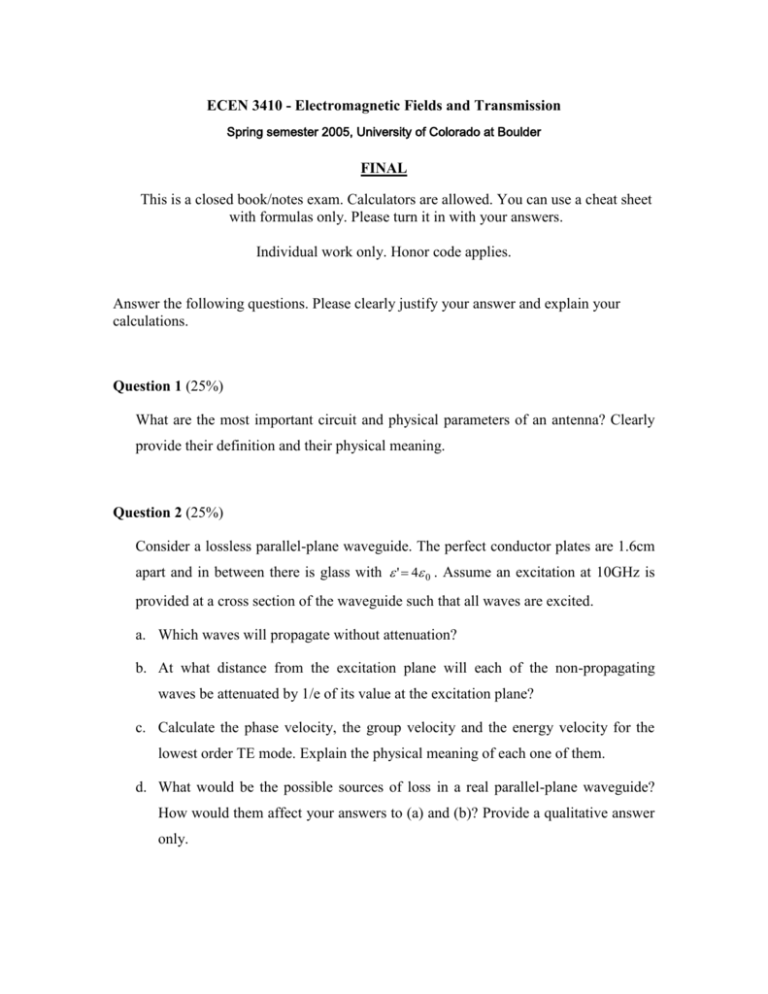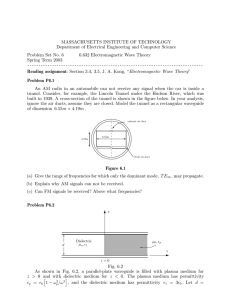ECEN 3410 - Electromagnetic Fields and Transmission
advertisement

ECEN 3410 - Electromagnetic Fields and Transmission Spring semester 2005, University of Colorado at Boulder FINAL This is a closed book/notes exam. Calculators are allowed. You can use a cheat sheet with formulas only. Please turn it in with your answers. Individual work only. Honor code applies. Answer the following questions. Please clearly justify your answer and explain your calculations. Question 1 (25%) What are the most important circuit and physical parameters of an antenna? Clearly provide their definition and their physical meaning. Question 2 (25%) Consider a lossless parallel-plane waveguide. The perfect conductor plates are 1.6cm apart and in between there is glass with ' 4 0 . Assume an excitation at 10GHz is provided at a cross section of the waveguide such that all waves are excited. a. Which waves will propagate without attenuation? b. At what distance from the excitation plane will each of the non-propagating waves be attenuated by 1/e of its value at the excitation plane? c. Calculate the phase velocity, the group velocity and the energy velocity for the lowest order TE mode. Explain the physical meaning of each one of them. d. What would be the possible sources of loss in a real parallel-plane waveguide? How would them affect your answers to (a) and (b)? Provide a qualitative answer only. Question 3 (25%) A 50 Ohm ideal transmission line is terminated by a 25 Ohm resistance. a. Find the input impedance at 0.2 wavelengths away from the load. Explain the algorithm in detail. b. Find the SWR and the position of a voltage and current maximums. Explain the algorithm in detail. c. What resistance can you put in parallel with the line a quarter-wave ( / 4 ) distance in front of the load to eliminate reflections on the generator side of that resistance? Explain. Question 4 (25%) A uniform plane wave propagating in air is described as E i ( z ) 10 exp( j 60z )y V/m The wave is normally incident on a plane boundary between air and a lossless dielectric located at x=0. The dielectric has 4 0 , 0 . a) Find the frequency and wavelength of the wave. Provide the full time and space dependent expression for the electric field. b) Find the corresponding magnetic field. c) What type of polarization does the wave have? d) Find the electric field vector of the reflected and transmitted wave. e) Find the total electric field in air and plot its magnitude as a function of z. Find the standing wave ratio.











